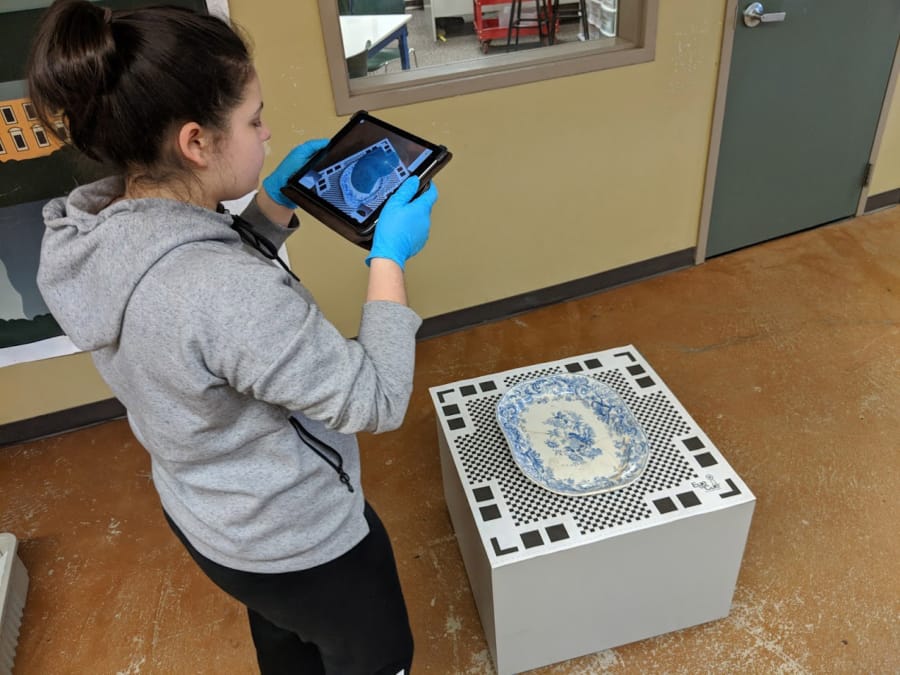If you live in Vancouver, you’re probably familiar with the pottery, tools, jewelry and other artifacts that tell a story about Fort Vancouver National Historic Site and the people who once lived there.
But what about people elsewhere in the world? Or even local children for whom a visit to a national historic site may not be as fun as playing a game on mom’s iPhone? How can you bring the history of the Hudson’s Bay Company’s presence in the Pacific Northwest in the 1800s to a global audience?
That’s the question Washington history students at Vancouver iTech Preparatory Middle School have sought to answer in recent years. On Saturday, the class will unveil the latest phase of Fort Vancouver Virtual Reality, or FVvr, pronounced “fever.” It’s the second step in social study teacher John Zingale class’s partnership with Fort Vancouver, an effort to bring the fort to a global audience using new technology.
Using an application called Qlone, students created 3D scans of more than 100 artifacts from Fort Vancouver’s collection. From needles to buttons, and dessert plates to chamber pots, glove-wearing students used iPads to take dozens of photos of the historical objects. From there, the application creates a virtual model with which visitors to Fort Vancouver Virtual Reality’s website can interact with either on their computer or using a virtual reality headset. The website can be found at www.itechfvvr.org.
If You Go
■ What: FVvr Launch Reception.
■ When: 10 a.m. to noon, Saturday.
■ Where: The Historic Hangar, Pearson Air Museum, 1115 E. Fifth St., Vancouver.
■ Cost: Free.
Zingale’s students have been working on different phases of the project for about two years. In 2016, his class developed a virtual tour using 360-degree cameras to take photos at various sites around the national historic site so people could explore without going in person.
“We want to engage this new generation in history and social sciences,” Zingale said.
Abby Anderson, 13, an eighth-grader in her first year at iTech Prep, was drawn to apply, and then reapply again, to iTech Preparatory School after hearing about the opportunities to study virtual reality. (The school offers spots in its classes based on a lottery by ZIP codes in the district.)
Students in Washington are only required to take state history once to graduate, but Anderson took the class a second time in order to give the virtual reality software a try.
She described the project as learning and engaging with history “at its grass-roots stage.”
“I’ve learned so much more from this project,” she said.
Students also wrote and read brief narratives explaining what the items are, what they’re made of and what their historical significance might have been.
“We wanted it to be as easy to access as possible,” said Kiera Navarro, a 13-year-old seventh-grader in Zingale’s class.
Students and Zingale hope the website will be seen by visitors across the globe, and web analytics suggest it already has. Visitors from other countries have already logged time on the site, and while this latest stage of the website won’t officially be unveiled until Saturday, Sketchfab, which provides the web hosting for the 3D models, has reached out to Zingale’s class to feature their work.
“It’s pretty cool to think this will be seen all over the world,” said Clark Hegewald, a 13-year-old freshman.
But more importantly than clicks or recognition, Zingale said his hope is his students will leave the class knowing how to think critically, consider the past like an archaeologist and find ways to relate to their community’s history.
“If we can teach them the skills to think and process information, we’ve done the right thing,” Zingale said.




